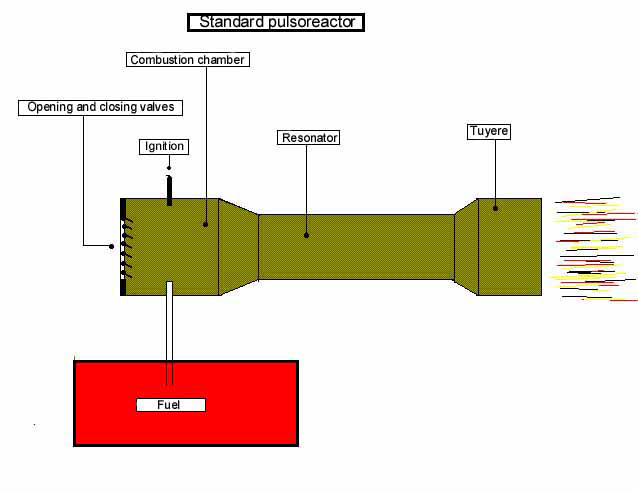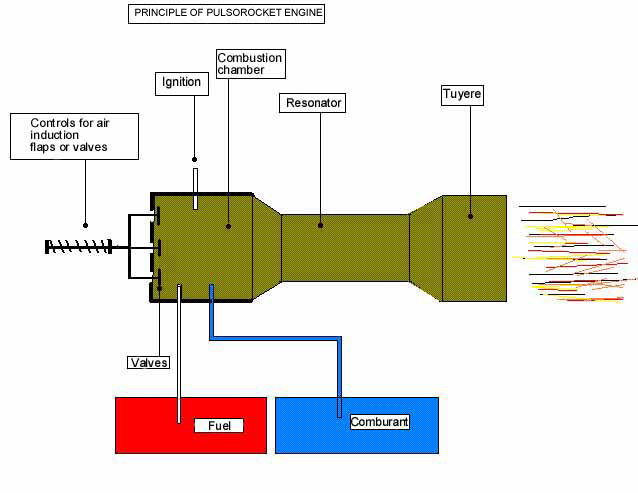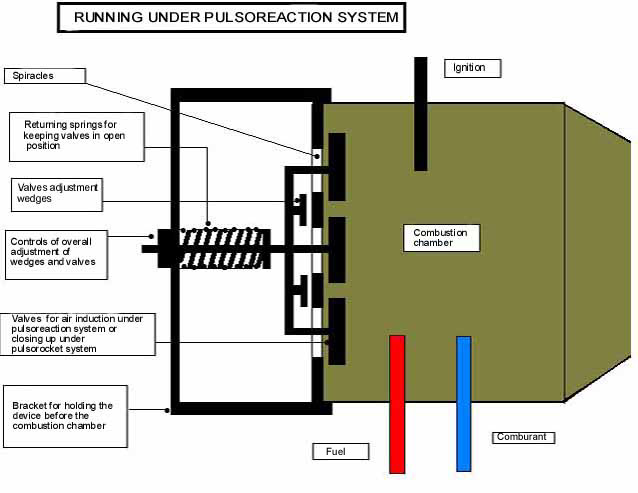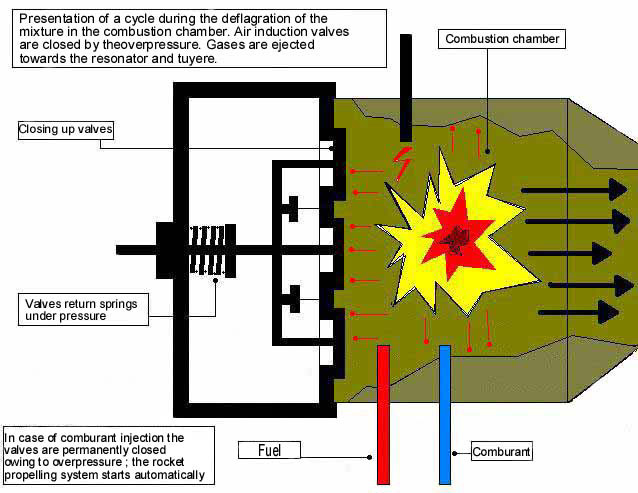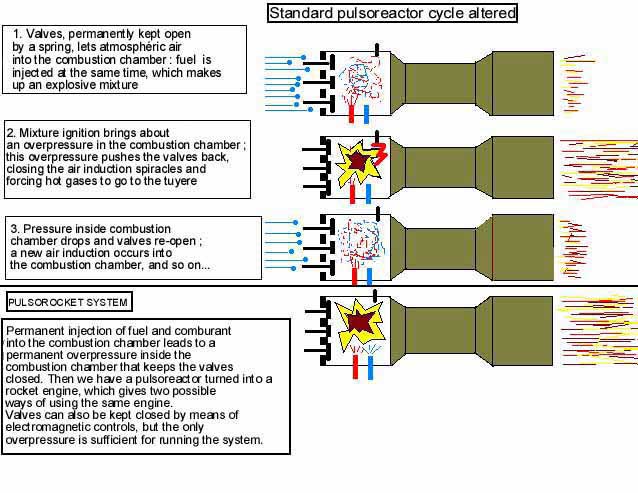THE HYBRID PULSOREACTOR ROCKET
Pulsoreaction is a propelling way that is known for having fitted out the notorious flying german bombs V1 during the second World War.
This system has swiftly fallen into disuse owing to the arrival of new engines, more efficient.
It can still be found in model aircraft making but does not go farther any more.
The straightforwardness of pulsoreactors lies in the fact that they comprise very few mobile parts, and are easy to build by professionnals or mechanics lovers.
The below drawings must be regarded as basic sketches and not as building plans. They are just set out for backing up a new running principle and make easier the making of new propelling means.
The valves shown on the heads of the pulso are only representative of the working system, and could just as well be thought as flaps or any other cyclic closing up means ensuring the closing up of the combustion chamber.
This work aims at revising the pulsoreactor as a basic engine and turning it into a rocket engine as it rises in the air or on pilot's request.
Running of the pulsoreactor :
1 - Atmospheric air induction into combustion chamber through the valves ; fuel injection ; fuel-air mixture
ignition.
2 -Detonation or deflagration of the mixture, according to its grade ; overpressure in the combustion chamber, as a
result of gases expansion ; closing up of air induction valves owing to this overpressure.
3 - Ejection of expanded gases to the resonator and tuyere.
4 - Restarting cycle.
This straightforward running cycle could be improved on request by induction of comburant into the combustion chamber; this would bring about a permanent overpressure, and turn in fact the pulsoreactor into a rocket engine.
This alteration is of great importance with the view of creating a fuel-efficient engine, able to carry out suborbital flights without launching pad or carrier plane.
We can think about using the standard pulsoreactor up to some altitude, then the ignition of the rocket cycle, in the same engine, for highest altitudes.
Drawing N°1
STANDARD PULSOREACTOR
This sketch sets out a standard pulsoreactor, with air induction valves and fuel tank.
In such an outline it can only run with atmospheric air and is fully dependent on it to burn the fuel in the combustion chamber.
